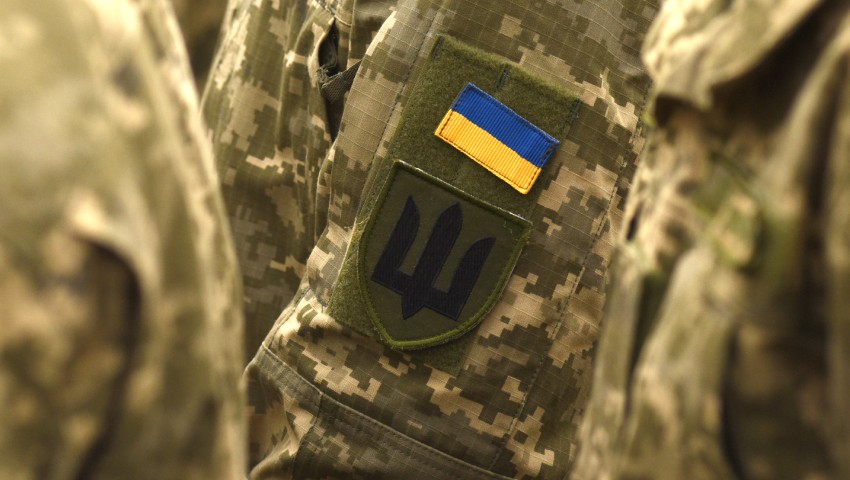Several top Russian military commanders confirmed dead since the start of the conflict and a stalled Russian advance – what makes Ukraine’s citizen-warriors so unique and how has Ukraine used the modern battlespace to its advantage?
To continue reading the rest of this article, please log in.
Create free account to get unlimited news articles and more!
For the better part of a year, Russia waged non-kinetic and grey zone war up and down eastern Europe. From weaponised migration on the Poland-Belarus boarder, through to independence movements in the Balkans and the threats of energy warfare to extract economic concessions from Europe’s powerhouses – Russia projected a hearty influence across the region.
It seems curious then that one of the world’s foremost military powers (although not considered a global power by many other metrics) has been unable to make any significant territorial gains after three weeks at war with their smaller neighbour.
Afterall, using Iraq as a comparison, by this point Western powers were busy celebrating the fall of Baghdad.
There are numerous contributing factors to Russia’s slow advance and large losses, ranging from the absurd through to the obvious.
In early March, online sleuths took to social media to argue that a combination of poor vehicle maintenance and badly made Chinese tyres had stalled Russia’s advance to Kyiv, forcing military vehicles off of muddy fields and onto roads. This had the result of Russian-tank-induced traffic jams on major Ukrainian highways.
In February, many questioned whether Russia would invade at all as it would signal to the world that (despite the bluster) Russia actually possesses substandard military technology, and that Ukraine’s irregular warfare capabilities would create a sustained insurgency that would simply be intolerable for the Russian government.
However, new theories have emerged arguing that the democratisation of weaponry coupled with rapid information sharing has created a new type of soldier that can singlehandedly have wide ranging impacts on the battlefield.
According to Lieutenant Colonel John Bolton and Andrew Senesac, junior policy fellow at the National Defense Industrial Association, in the Small Wars Journal, these “soldier-shooter-texter” fighters are providing insurmountable challenges for conventional militaries – and are even challenging widescale operational-level offensives.
“Once expensive systems are now cheap, dispersible, and resilient,” the pair argued.
This democratisation of effective weaponry, coupled with “the distributed intelligence and coordination networks made possible by mobile phones and social media have changed warfare, dulling the power of even the most audacious offense”.
Democratising weaponry
The theory posits that widely available and easy to use weaponry have put incredibly destructive powers in the hands of irregular troops. Such accessible capabilities have made even untrained members of citizen militias threats to tank and helicopter teams.
“The plethora of portable anti-aircraft and anti-armor weapons pervading Ukraine makes even poorly trained soldiers deadly to vehicle and aircraft crews,” the pair note.
At an operational-strategic level, this has enabled Ukraine’s commanders to use their well-trained regular forces to more effect in recapturing strategic assets.
“Easy to use anti-tank and anti-armor systems enable reserves and less well-trained soldiers, as shown by the Ukrainian Territorial Defense Force (TDF), to assume responsibilities in a defensive action that enable better units to engage in counter-offensives or maneuver to positions of advantage more quickly than offensive forces can respond.”
In the future, Bolton and Senesac contend that this may influence warfighting – with a minor pivot from large scale invasions in favour of “dispersed, mobile, light formations below the battalion level”.
Information domination
Further to the growing technological capabilities of untrained and irregular soldiers, mobile phones have provided Ukrainian forces with an information edge: not only in demonstrating and amplifying battlefield wins to buttress the morale of the country’s fighting population, but also providing military commanders with unforeseen command, control and situational awareness of the battlespace.
“While the Iraqis leveraged cell phone networks and rudimentary signaling using electrical grids, the Ukrainian defense has seen individual soldiers not only destroy Russian tanks using Javelins, NLAWs, or Stringers, but to act as a reconnaissance, collection, command and control, and propaganda node simultaneously,” Bolton and Senesac argue.
“Commanders, enabled by basic staffs and social media aggregation, can readily access information heretofore unimaginable. And now battlefield reports come augmented with corroborating pictures enabled by cloud storage for exploitation.”
The pair note that this informational situational awareness, coupled with more traditional forms of intelligence, surveillance and reconnaissance (ISR) collected via satellites, will make largescale invasions less impactful as incumbents have great opportunity to prepare for enemy advances.
In the context of the Russian invasion of Ukraine, Ukrainian commanders are less likely to be taken aback by major surprises on the battlefield.
Has it worked?
Several of Russia’s leading military leaders have died throughout the conflict. A curious case when their role is to maintain command and control of the military to achieve an objective, rather than engaging in fighting.
The following deaths have been reported:
- Lieutenant General Andrei Mordvichev, Commander of the 8th Combined Arms Army
- Major General Oleg Mityaev, Commander of the 150th motorised rifle division
- Colonel Sergei Sukharev, Commander of the 331st Guards Parachute Assault Regiment
- Major General Vitaly Gerasimov, Chief of Staff for the 41st Army
- Colonel Andrew Kolesnikov, Commander of the Guards Tank Kantemirovskaya Division
- General Andrei Sukhovestky, Deputy Commander of the 41st
Meanwhile, it has been reported that President Vladimir Putin has further sacked numerous senior military and intelligence leaders.
This has appeared in concert with evidence from the Institute for the Study of War, which shows little territorial gains by Russian soldiers over recent days, reporting a “slow advance” around Mariupol and fortifying positions around Kyiv on 20 March.
Get involved with the discussion and let us know your thoughts on Australia’s future role and position in the Indo-Pacific region and what you would like to see from Australia's political leaders in terms of partisan and bipartisan agenda setting in the comments section below, or get in touch with

 Login
Login







